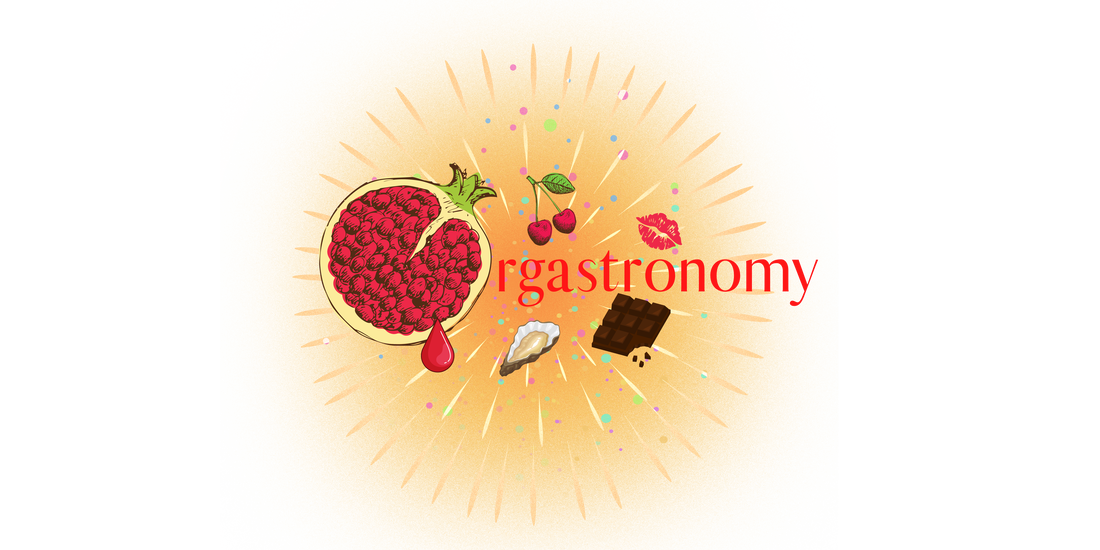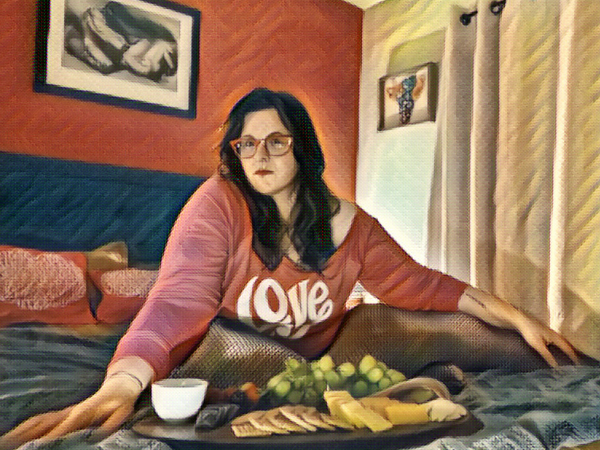Sowing the Seeds of Orgastronomy If science is the how and why of the relationship between sex and food, then culture provides the who, what, where, and when. Culture is the people, traditions, places, and times that we associate with food and sex, and then impact how we link the history of how we determine ‘what’ is sexy.
In thinking about my own history and culture, the images and links I make to food and sex actually take a more negative connotation than positive. Rather than encouraged to see food as a nourishing source of sexual power and joy, food in my family was often regarded as simple sustenance. Hailing from a family with a history of body dysmorphia and eating challenges, the experiences I remember the strongest are aligned more with how food could make me less sexy rather than enjoying food for the joy it could bring me as a source and appendage of pleasure. Considering the Catholic religiosity I was immersed in, it is not surprising that an environment of deprivation rather than celebration and indulgence was the narrative that I grew up immersed in. However, I didn’t grow up in a bubble, and another factor of environment was the society I lived in, both locally and nationally. Exposure to media, such as television and movies, taught me that chocolate and strawberries were associated with sexual gratification and romance. Local journalism and other sources taught me that oysters were an aphrodisiac, and that herbs could be potent methods to stroke and enhance libido. Growing up in the rust belt during the 80s, alcohol was always a prevalent part of dating, romance, and relationships. By the time I went to college, I magically thought that if someone bought me chocolate, strawberries, and champagne, and put on some music, that biology would take care of the rest. Of course, we all know there is more to sexual gratification than this, and the expectation that the mere presence of these foods would illicit what I thought pleasure should be demonstrates the strength of cultural history and exposure in our environment. Culture is what we are taught to expect related to sex, sexuality, pleasure, and what will give us what we feel we need to experience gratification. It is our emotional connection to pleasure, and how we interpret and filter our expectations through our personal lenses. So, if you were raised in a familial environment where the concept of food and pleasure was deconstructed through negative associations, what can you do to change that viewpoint? For one, our brains have the benefit of plasticity, which means we can create neural pathways with experience and association. If you have never seen food as a source of pleasure, but more something remembered as painful, working with a professional to help create re-association can assist with helping to overcome those associations to help create a way to find the joy in what food and sex paired has to offer. Exposure is another way to create these links, by actively creating your own personal culture that allows yourself to lean into the pleasurable elements that linking food with sex can bring. For example, if you were always told that chocolate would give you bad skin, so you have associated to fear eating this, try bringing small amounts into your romance and sex life. This could be small pieces of chocolate brought into the bedroom for single or partner foreplay, or a chocolate dessert shared with a partner that you purchase specifically to share when preparing to enjoy sex. Focusing on pleasure is what gives our life meaning and joy. Learning to love food not just as a source of nourishment, but a central tenant to the foundation of what makes us feel good, allows us to nurture our sexual appetites in expanded ways. By combining the ability to use science as a guide for how to trigger pleasure, and culture as the historical knowledge of what assists science, we can paint an anthropological and scientific picture of how to use food as an additional element of enhanced gratification. Now that we’ve covered the bases of science, culture, and defining Orgastronomy, it’s time to have FUN! Next month we will be jumping in to explore that aphrodisiac for the ages: chocolate. Cum along for the journey! Interested in finding your inner yum? Subscribe to get information on upcoming virtual workshops! |
orgastronomy™-by Holly Lovejoy Archives
April 2022
Categories
|


 RSS Feed
RSS Feed
